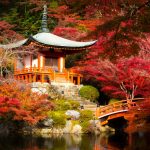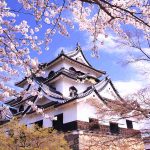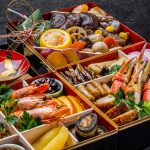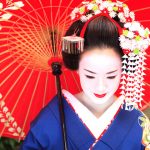Visit & Explore
Japan
377,915 sq kms
Geographic Area
126.8 million
Population
Yen
Currency
Japan is intense
It’s an overwhelming place, and of all Asia tours, Japan is arguably one of the most sensually exciting. Tokyo’s bright lights and seas of people swim around you, blanketing everything in a man-made shroud. The food, the art, the design, full of subtlety, meant to linger with you long after you’ve left it.
Japan is a land steeped in tradition and beauty meant to improve the lives of those around it. Japan tours with Liberty Tours are a feast of sights, sounds, and tastes. The people in Japan take pride in their work, from the sushi chef waiting with bated breath for you to take a bite to the subway assistant striving to help you understand the truly baffling interwoven lines, tracks, and routes. Japan is one of the most unique and individualized places in the world. It’s contradictory, with lights and sounds seemingly all day and night followed by pure serenity. Liberty Tours and our Japan tours will serve you a covering of unforgettable sensory input and remarkable experiences.
Tours in our catalogue are ready to be booked or tailored to fit your personal interests and needs. Find the best-matched itinerary, or contact your travel consultant directly for a totally personalized tour. You may visit one country a time or pack several Asian countries in one tour. With our expertise and experience, all you need to do is sitting back and relax
Money
Currency: Japanese Yen.
Japan is a cash society. Luckily, it is the safest country in the world so it’s okay to carry large amounts of cash with you at all times without the worry of being mugged or held up. Generally, there is no need to buy Japanese yen in your home country before your trip, as you will most likely pay a higher commission (about 3%) and a worse exchange rate than you would get at the airports, banks, or ATMs in Japan.
Credit cards are accepted at major hotels and larger restaurants. Small business hotels and small restaurants generally do not accept credit cards. The credit card company will charge a fee on your bill for foreign exchange (usually 1-3%), and there may be a surcharge from the retailer/hotel to pay by credit card – ask first.
Foreign currency and foreign traveler’s checks are not accepted anywhere in Japan except on certain U.S. military bases and facilities.
Eating and Drinking
In most Japanese restaurants, a hostess will seat you when you walk in. Even if it’s a sushi bar with only a few seats open at the bar, it’s good manners to acknowledge the chef behind the counter (if he looks your way) before sitting down.
If there is no hostess, many people will ask for the chef’s permission before sitting down at the bar. This can be done by merely pointing to the open seats (with an open palm, of course) and saying, “OK?”
If you’re adventurous, you can usually get a local, nutritious, reasonably priced, delectable lunch at a Japanese restaurant by ordering the teishoku, the set lunch of the day. Don’t bother asking what the teishoku contains (unless your server speaks fluent English); it’s complicated and unless you’re extremely familiar with Japanese food, you probably won’t recognise the names of the items anyway.
But there is usually a variety of vegetables, meat, or fish, and it almost always comes with miso soup and rice.
Many restaurants will have a basket on the floor next to the table. Stow your belongings here. It’s a great way to keep your items together so they don’t get in others’ way.
When you sit down at any type of restaurant in Japan, you will be offered a wet towel called an oshibori (cold in summer, hot in winter) to clean your hands. You may also use it during the meal to wipe your hands or mouth and to clean up spills.
Some people also use oshibori to wipe their face or neck when they first sit down, but they’re not really supposed to. Definitely avoid doing this in a fancy restaurant; keep the wet towel to hands only. Lay it on the table by the side of your plate or bowl. Do not place it on your lap.
Do not ask for exceptions or substitutions in your order. Items are delivered as they are offered on the menu, not according to customers’ special requests. Take the food as it is presented to you.
No one will start eating until either the guest or the most important person at the table, picks up their chopsticks to start.
Japanese meals typically feature small bowls of food, many with lids. Take off the lids and rest them upside down on the table (so as not to spill condensation on the table or tray). If the top doesn’t come off easily, gently squeeze the bowl with your fingers wrapped around it to break the seal created by the steam. Put lids back on the bowls when finished.
Gracefully choose foods from different bowls (without hovering indecisively with your chopsticks) and savour the flavours. Try some rice, then a bit of this and that, then some more rice, etc.
You’ll find that certain flavours complement each other, such as rice with miso soup. This is the art of eating in Japan.
Bring small bowls up to your mouth rather than hunching over the bowl on the table. Hold the bowl with four fingers under the bowl, your thumb supporting one side while using the opposite hand to work the chopsticks. Never put your thumb on the rim.
You can drink straight from soup bowls but do so while holding the bowl with two hands. Place one hand underneath the bowl (as instructed above), and use the other hand to cup the side.
Never ever, ever put sugar in green tea. It’s supposed to be healthy and enjoyed as is.
Tipping
Some people say you should never tip in Japan, but tipping etiquette is never quite that simple. It’s true that many people in Japan believe that good service is standard and tipping is rude. However, staff working for companies connected with tourism may still be grateful for tips. If you do decide to tip in Japan, place the tip inside an envelope and hand over the envelope. It would be rude to give cash directly from your pocket.
Australian Government Advice
The Australian Government provides up to date information on the safety of travelling to various countries, and all travellers should take note of this advice. Liberty Tours recommends that all travellers take out appropriate Travel Insurance to cover the entire duration of their absence from home. Liberty Tours can assist with obtaining Travel Insurance.
Follow this link for current official assessment.
Advice on health risks and vaccination recommendations can also be found using the same link.
Weather
Japan is a year-round destination, with four distinct seasons that offer something for everyone.
Skiers and snowboarders in search of the perfect powder stash are drawn to Japan’s mountain regions during winter, which also attracts hikers during the summer months.
Further south, the beaches of the southern islands are also busy during summer thanks to the high sea and air temperatures.
In spring and autumn, pleasant temperatures combine with the natural beauty of ‘sakura’ (cherry blossom season) and ‘koyo’ (autumn leaf viewing) to make these seasons an especially popular time to visit Japan.
What to pack
In winter: in Hokkaido and northern Honshu, up to Niigata and Fukushima bring very warm clothes such as synthetic thermal long underwear, especially for Hokkaido, a fleece, a down jacket, gloves, a scarf, a hat, and a raincoat. In the area of Tokyo, Kyoto and Osaka, warm clothes, such as a sweater, a jacket, a hat, and possibly a raincoat or umbrella. In Okinawa and the small southern islands, spring/autumn clothes, a sweatshirt or sweater, a jacket, a raincoat or umbrella.
In summer: in northern Hokkaido, spring/autumn clothes (light for the day), a sweater and a raincoat. In Sapporo and northern Honshu, light clothing, a sweatshirt and a light jacket, a raincoat or umbrella. Throughout south-central Japan and the small islands, including Okinawa and Tokyo, light, tropics-friendly clothing, a scarf for the breeze, a light sweatshirt for the evening and air-conditioned places, a light raincoat or umbrella. For the mountainous areas, warmer clothes depending on altitude, spring/autumn clothes at about 2,000 meters (6,500 feet) in Honshu. When going to the reef, you can bring snorkeling equipment, including water shoes or rubber-soled shoes. It is customary to remove shoes before entering homes and temples, so it can be useful to wear shoes without laces, or that is at least easy to take off.
Facts
Time Zone: Japan is 9 hours ahead of Greenwich Mean Time
Electricity: 100 Volts. Plug type A or B
Language: Japanese
Religion: Shintoism 79.2%, Buddhism 66.8%, Christianity 1.5%, other 7.1%







